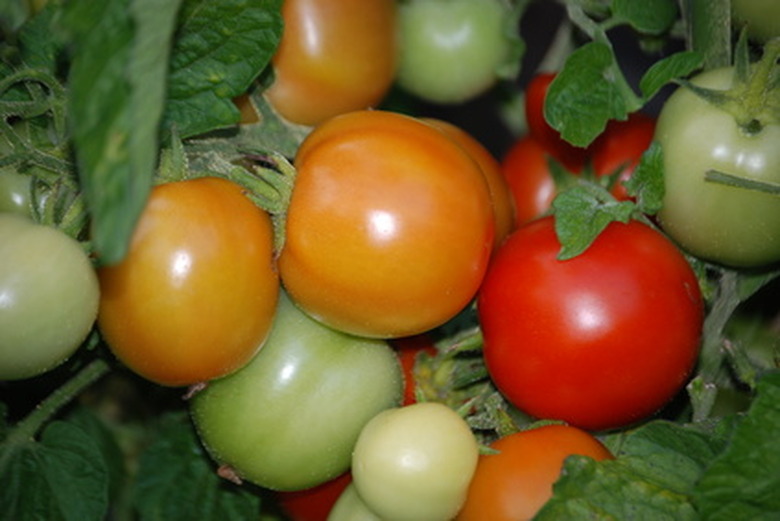Lime For Tomato Plants
Tomatoes are the most popular homegrown vegetable, but they do require a bit of babying. They don't tolerate cold temperatures and must be planted after temperatures are consistently above 65 degrees Fahrenheit, but they won't ripen if temperatures are over 77 degrees F. Give them too little water and they produce few fruits. Give them too much water, too quickly, and the skins crack. Additionally, soil fertility and pH level impact the quantity and quality of fruits.
Indications
Lime is used to prevent blossom end rot in tomatoes. Blossom end rot is caused by a calcium deficiency in the soil and may be exacerbated by alternately dry and overly wet conditions. The ideal pH level for growing tomatoes is 6.5 to 6.7, according to North Carolina State University. A soil test conducted by a local extension office or professional lab can determine the pH level. If the pH level is found to be lower, lime should be added.
- Tomatoes are the most popular homegrown vegetable, but they do require a bit of babying.
- They don't tolerate cold temperatures and must be planted after temperatures are consistently above 65 degrees Fahrenheit, but they won't ripen if temperatures are over 77 degrees F. Give them too little water and they produce few fruits.
Symptoms
Tomatoes affected by blossom end rot mature and ripen normally, but develop small tan or brown spots on the blossom ends. The spots are barely noticeable at first, but soon spread to as much as 2 inches wide. The blossom end of the tomato rots, and while the upper half is edible, the tomato is not aesthetically pleasing.
Application
Dig lime 12 inches deep into the soil prior to planting at a rate of 3/4 cup lime for each tomato plant. A balanced vegetable fertilizer (8-8-8) may be applied at the same time at a rate of 3/4 cup per tomato plant. Apply lime and fertilizer on soil that has been tested at the rate recommended by the soil analysis.
Prevention/Solution
In addition to liming the soil, several other strategies may help prevent blossom end rot, according to North Carolina State University. Applying a foliar calcium nitrate spray at the rate of 4 tbsp. per gallon of water may prevent the disease. The solution is applied two to three times per week after the second fruit cluster develops. Tomatoes provided with a slow, steady source of water are also less likely to develop blossom end rot. Mulches such as straw, newspapers and pine straw laid around tomato plants conserve moisture and may prevent the disease.
- Tomatoes affected by blossom end rot mature and ripen normally, but develop small tan or brown spots on the blossom ends.
- Dig lime 12 inches deep into the soil prior to planting at a rate of 3/4 cup lime for each tomato plant.
Other Diseases
Tomatoes are prone to many diseases, especially when grown in hot, humid conditions. Many tomato varieties are disease resistant and are recommended for areas where diseases are prevalent. Additionally, wet foliage spreads disease. Good watering practices such as the use of soaker hoses and watering in the morning help keep leaves dry.
